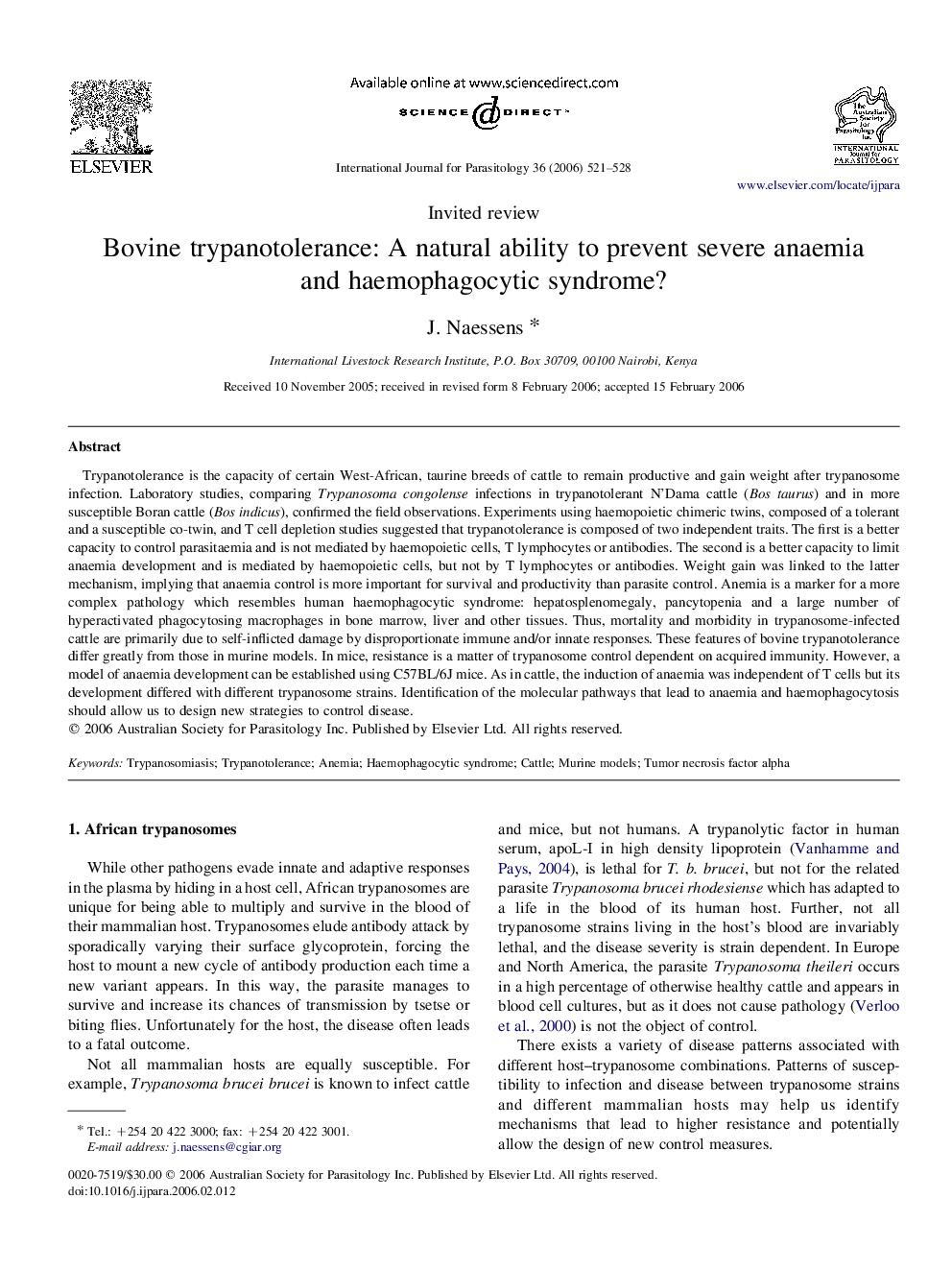| Article ID | Journal | Published Year | Pages | File Type |
|---|---|---|---|---|
| 2436944 | International Journal for Parasitology | 2006 | 8 Pages |
Trypanotolerance is the capacity of certain West-African, taurine breeds of cattle to remain productive and gain weight after trypanosome infection. Laboratory studies, comparing Trypanosoma congolense infections in trypanotolerant N'Dama cattle (Bos taurus) and in more susceptible Boran cattle (Bos indicus), confirmed the field observations. Experiments using haemopoietic chimeric twins, composed of a tolerant and a susceptible co-twin, and T cell depletion studies suggested that trypanotolerance is composed of two independent traits. The first is a better capacity to control parasitaemia and is not mediated by haemopoietic cells, T lymphocytes or antibodies. The second is a better capacity to limit anaemia development and is mediated by haemopoietic cells, but not by T lymphocytes or antibodies. Weight gain was linked to the latter mechanism, implying that anaemia control is more important for survival and productivity than parasite control. Anemia is a marker for a more complex pathology which resembles human haemophagocytic syndrome: hepatosplenomegaly, pancytopenia and a large number of hyperactivated phagocytosing macrophages in bone marrow, liver and other tissues. Thus, mortality and morbidity in trypanosome-infected cattle are primarily due to self-inflicted damage by disproportionate immune and/or innate responses. These features of bovine trypanotolerance differ greatly from those in murine models. In mice, resistance is a matter of trypanosome control dependent on acquired immunity. However, a model of anaemia development can be established using C57BL/6J mice. As in cattle, the induction of anaemia was independent of T cells but its development differed with different trypanosome strains. Identification of the molecular pathways that lead to anaemia and haemophagocytosis should allow us to design new strategies to control disease.
